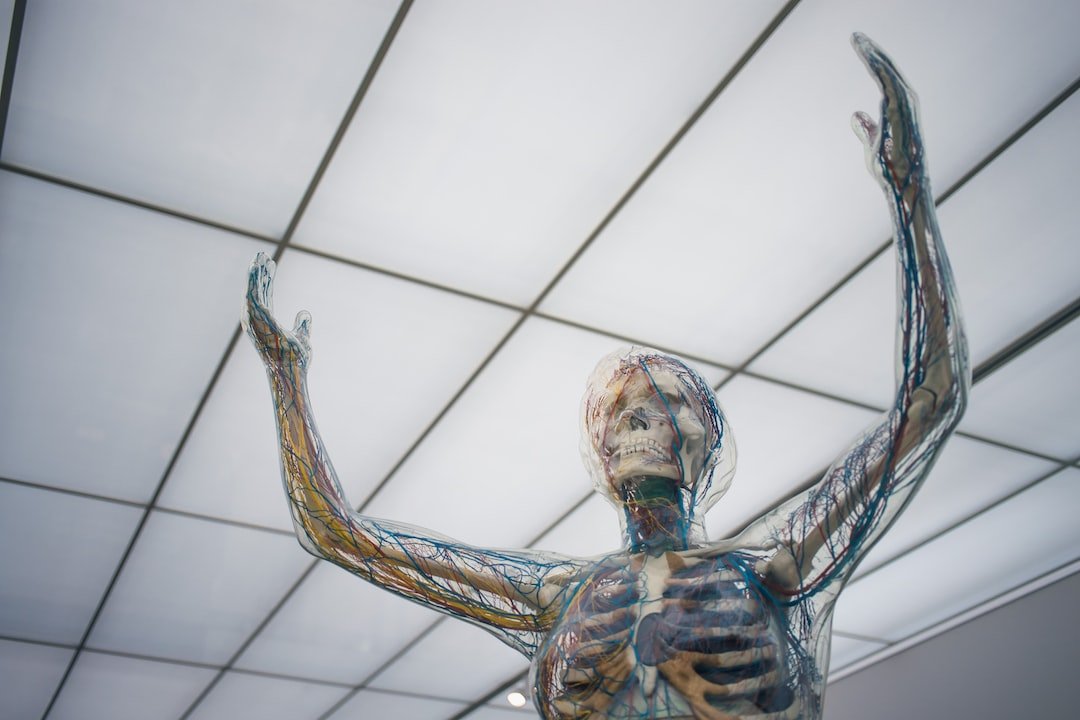Home Organ Transplantation Surgery Organ Transplantation Complications Organ Transplantation Success Rate Organ Transplantation Rejection
A Comprehensive Guide to the Anatomy of the Nervous System
Category : Organ anatomy | Sub Category : Nervous system anatomy Posted on 2023-07-07 21:24:53

A Comprehensive Guide to the Anatomy of the Nervous System
Introduction:
The human body is made up of many different organs that work together to ensure survival. The nervous system is one of the most important. The brain, spine cord, and network of nerves are the subsystems that control and coordinate our body's functions. In this post, we will look at the nervous system's major organs and their functions.
1 The brain is related to the brain.
The brain is the most complex organ in the body. The brain is located in the skull and is responsible for processing information. The brain is divided into several parts.
A The largest part of the brain is the cerebrum. The body is divided into two hemispheres, each controlling the other side.
A. The cerebellum is located at the back of the brain and is involved in voluntary muscle movements.
c. Basic life functions such as breathing, heart rate, and blood pressure are controlled by the brainstem.
2 The film The Spinal Cord.
The spine is a vital link between the brain and the rest of the body. The brain and muscles are protected by the spine, which relays sensory information from the body to the brain.
3 Nerves:
The nervous system is made up of a vast network of nerves that travel from the brain to the body. The nerves can be categorized into two types.
A The cranial nerves are the communication channels between the brain and various parts of the head and neck. These nerves control many functions.
A. There are 31 pairs of spinal nerves that innervate the rest of the body. They give us the ability to feel touch, pain, temperature, and pressure. They have motor signals to control muscle movements.
Conclusion
Understanding the nervous system is important in understanding how our bodies function. The brain, spine, and network of nerves are all vital parts of our bodies and play a vital role in ensuring proper communication and coordination. The nervous system's complex structure and functions are truly remarkable. Next time you wonder about your body's ability to perceive and respond, remember the amazing things that are within the nervous system.
Leave a Comment:
SEARCH
Recent News
- Zurich, Switzerland has long been known for its exceptional quality of life, beautiful surroundings, and high standard of healthcare. In contrast, the Russian healthcare system has faced various challenges and struggles over the years. Let's delve into the differences between the healthcare systems in Zurich, Switzerland, and Russia.
- Navigating Medical Device Regulations in Zurich, Switzerland
- In the bustling city of Zurich, Switzerland, finding healthy fast food options can be a challenge. However, with a little exploration and curiosity, you can discover some fantastic spots that offer nutritious and delicious meals on the go.
- YouTube Content Creation: Exploring the Russian Healthcare System
- In today's digital age, YouTube has become a powerful platform for content creators to share their knowledge and expertise with a global audience. One particular niche that has been gaining traction on YouTube is the creation and translation of content related to medical devices regulation.
- Are you looking for tips on creating YouTube content about healthy fast food options and the importance of translation in reaching a wider audience? Let's dive into how you can combine these two aspects to create engaging and informative videos for your channel.
- Exploring the Russian Healthcare System: Insights from a YouTube Channel
- Navigating the Regulatory Landscape for Medical Devices on YouTube
READ MORE
1 month ago Category : organb

Zurich, Switzerland has long been known for its exceptional quality of life, beautiful surroundings, and high standard of healthcare. In contrast, the Russian healthcare system has faced various challenges and struggles over the years. Let's delve into the differences between the healthcare systems in Zurich, Switzerland, and Russia.
Read More →1 month ago Category : organb

Navigating Medical Device Regulations in Zurich, Switzerland
Read More →1 month ago Category : organb

In the bustling city of Zurich, Switzerland, finding healthy fast food options can be a challenge. However, with a little exploration and curiosity, you can discover some fantastic spots that offer nutritious and delicious meals on the go.
Read More →1 month ago Category : organb
